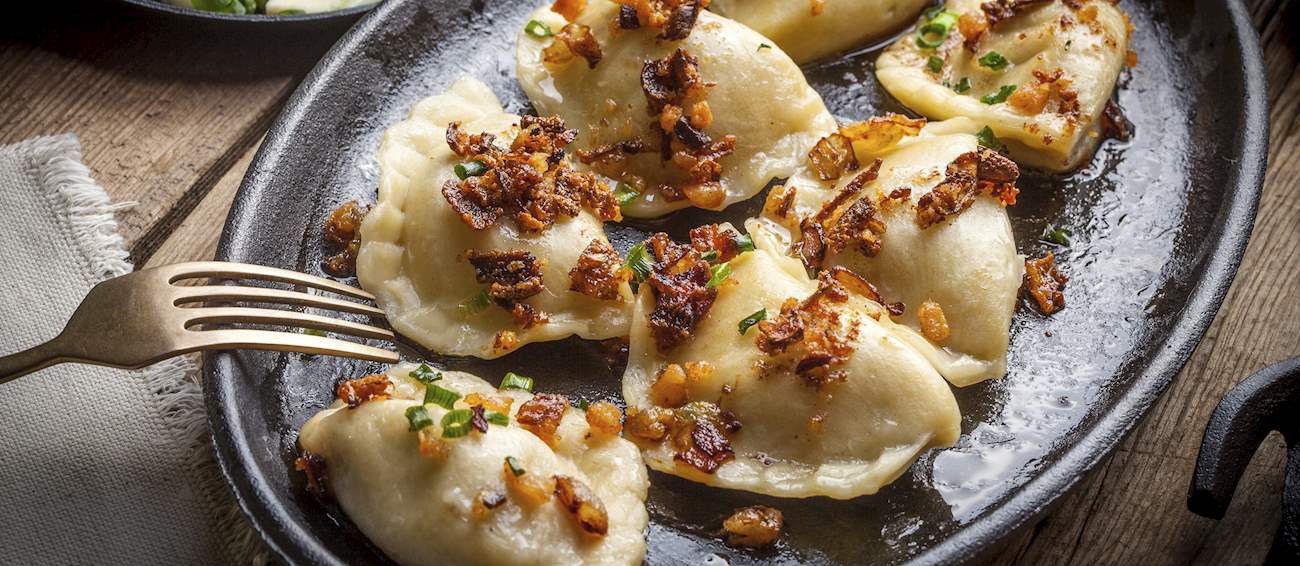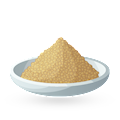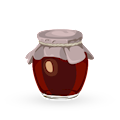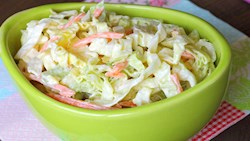MAIN INGREDIENTS
Pączki are traditional Polish doughnuts are made from yeast-leavened dough that's rich in eggs, sugar, milk, and fats. A touch of spirit, such as rum, is often added to the dough for pączki to prevent the absorption of oil during frying. They are darker and larger than their Austrian cousin krapfen and often ball-like in shape rather than round.
Traditional fillings are plum preserve and rose jam. They are placed at the center of the dough and then wrapped around it to make a ball-like shape. Pączki are much more than just a tasty treat; they hold cultural significance in Poland and among Polish communities worldwide.
Sernik is a cheesecake from Poland, stemming from old Christian and Jewish traditions. It is made with eggs, sugar, and twaróg - a type of curd cheese that has been used in desserts for hundreds of years. It is believed that sernik originated in the 17th century, when King Jan III Sobieski brought the recipe with him after his victory against the Turks at the Battle of Vienna.
Today, there are many varieties of sernik, some baked, some unbaked, but it is usually made on a layer of crumbly cake. Often times raisins, chocolate sauce, or fruits are also added to sernik, and one of the most popular varieties of the dessert has a sponge cake as its base and is covered with jelly and fruit on top.
MOST ICONIC Sernik
View moreMAIN INGREDIENTS
Originating from the historical region of Red Ruthenia, these soft, crescent-shaped dumplings are filled with a combination of potatoes and cheese, which is occasionally modified with various seasonings or fried onions. Pierogi ruskie are usually boiled and shortly fried until they develop a crispy texture.
The dumplings are often served sprinkled with cracklings, crispy fried onions, or bacon, and can be enjoyed as a hearty appetizer or as a main course. In Ukraine, the pierogis are called varenyky, and they are so popular that there is even a monument celebrating varenyky in the city of Cherkasy.
OTHER VARIATIONS OF Pierogi
MOST ICONIC Pierogi Ruskie
View moreKnown as koldūnai in Lithuania, kalduny in Belarus and kołduny in Poland, these stuffed dumplings boiled in salted water are a staple of regional cuisine. Traditionally filled with minced pork, beef, chicken, curd cheese, or mushrooms, they make for an excellent lunch choice and can be enjoyed with a variety of garnishes, from butter and black pepper to mayonnaise, sour cream, crispy bacon, or spirgučiais (a type of pork rind).
Redykołka is a small, semi-hard cheese made from half-fat sheep's milk in the Podhale region in Poland. The name derives from the Polish word redyk, meaning a ceremony where sheep are taken to mountain pastures, kept there grazing and brought back down from the mountains.
The cheese is made in unusual shapes of small animals, birds, hearts or spindles. It must not exceed the maximum weight of 300 grams, the smallest one being redykolka in the shape of a spindle and weighing from 30 to 60 grams. It is made from the leftovers in the process of making the famous Polish Oscypek cheese and is regularly confused with it.
MAIN INGREDIENTS
Żurek is a traditional soup characterized by its distinctively sour taste, which comes from sour leavening, or the fermentation of bread and rye flour. The soup also contains meats such as sausages, bacon, or ham, and vegetables such as potatoes and mushrooms.
Although it is extremely popular throughout Poland, each region has its own version of the dish. It is sometimes served in an edible bowl made of bread, when it is common to add halves of hard-boiled eggs on top of the soup as garnish. Żurek is traditionally prepared and consumed during Easter.
OTHER VARIATIONS OF Borsch
MOST ICONIC Żurek
View morePlacki ziemniaczane are the well-known potato pancakes, a common and straightforward dish enjoyed in all parts of Poland. The combination of grated potatoes and onions, incorporated with eggs and occasionally flour, form the base of the dish.
It is highly versatile, and it can be adapted with crushed garlic or spices such as marjoram, parsley, and chives, to satisfy every taste. Potato pancakes are round and small in size, similar to American pancakes, and usually fried in shallow oil.
With dark and crispy skin and spongy and soft interior, this quick and adaptable dish is a staple in every Polish household.
MOST ICONIC Placki ziemniaczane
View moreMAIN INGREDIENTS
Jabłecznik, also known as Polish apple cake, is a traditional dessert in Poland. It consists of a layer of spiced apple filling sandwiched between two layers of sponge cake. The more popular szarlotka is similar but has shortcrust pastry in place of sponge cake.
The apples are often mixed with cinnamon, sugar, and sometimes a touch of lemon juice, creating a sweet and slightly tart flavor profile. This cake is commonly dusted with powdered sugar before serving and is enjoyed as a comforting treat, especially during the autumn and winter months.
Bundz is a Polish cheese made from sheep's milk. The cheese is produced in the mountainous regions of the country. It is reminiscent of cottage cheese in flavor and texture, and has a mild, fresh flavor. The remaining whey created in the production of bundz is used for the preparation of a traditional Polish sour beverage called żętyca.
Hailing from Podlaskie region, marcinek is a dessert consisting of layers of dough, usually around twenty thin layers, which are coated with cream and stacked to form a cake-like dessert. Similar to a shortcrust pastry, the dough for the cake is made from a combination of butter, flour, sugar, and eggs, while the coating cream typically incorporates sweetened sour cream, whipping cream and flavorings such as lemon zest, almond extract, or vanilla.
The preparation of marcinek is a time-consuming process since each layer is rolled into a circle and baked separately. When the cake is layered and coated, the remaining cream is usually used to cover and decorate the sides and the top of the cake.
Optionally, it can be garnished with cookie crumbs, coconut flakes, or cocoa.
TasteAtlas food rankings are based on the ratings of the TasteAtlas audience, with a series of mechanisms that recognize real users and that ignore bot, nationalist or local patriotic ratings, and give additional value to the ratings of users that the system recognizes as knowledgeable. For the “Top 100 Polish Foods” list until January 31, 2025, 19,173 ratings were recorded, of which 14,671 were recognized by the system as legitimate. TasteAtlas Rankings should not be seen as the final global conclusion about food. Their purpose is to promote excellent local foods, instill pride in traditional dishes, and arouse curiosity about dishes you haven’t tried.









































































































